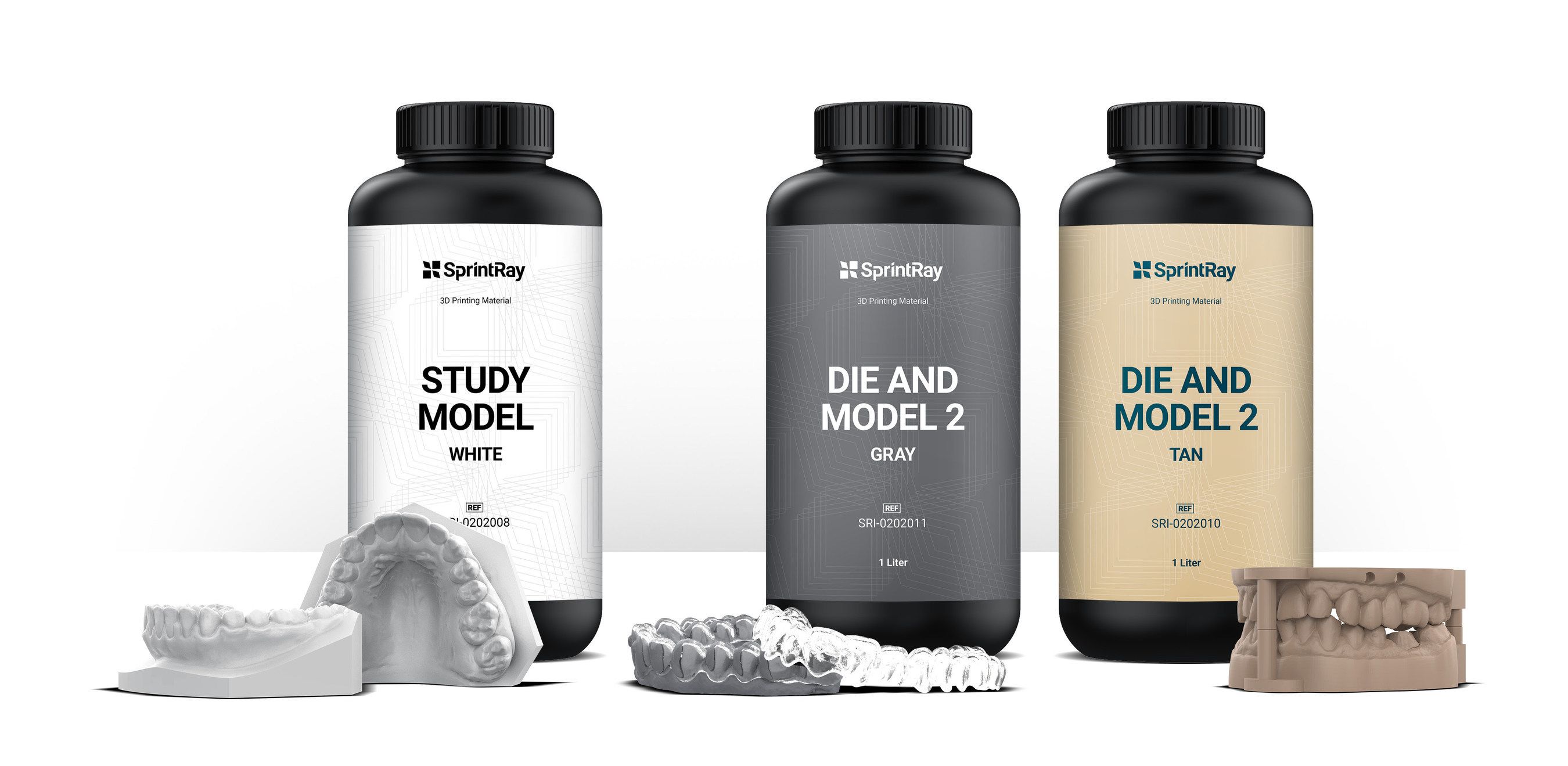SprintRay release 3 new and improved resins for 3D printing
SprintRay Inc. has announced the release of 3 new 3D printing resins designed specifically for dental production.

SprintRay Inc. has announced the release of 3 new 3D printing resins designed specifically for dental production, Die & Model 2 Gray, Die & Model 2 Tan, and Study Model White.
These new resins feature target improvements over their predecessors that are designed to improve the efficiency of the dental 3D printing workflow. These new resins will begin shipping in early September.
The new Die & Model 2 resins feature a reduced odor, improved mechanical properties, virtually no pigment settling, and improved color. Since Die & Model resins are frequently used for the production of clear aligner devices, the material has been specifically designed to be easier to separate from thermoforming materials. Die & Model 2 resins are faster than the outgoing material, with increased print speeds of around 10% for most print jobs.
The Study Model White draws on all the same improvements as the Die & Model 2 materials. Additionally, this all-new resin provides a rapid, accurate option for 3D printing models for case presentation and education—a growing practice among technology-savvy dentists—and helps doctors communicate the vale of restorative and esthetic procedures in a new, innovative way.
"The success of our Die & Model resins came down to their speed, reliability, and accuracy," Amir Mansouri, CEO of SprintRay, said. "Die & Model 2 and Study Model White build on this great foundation. Thanks to the continuous input from our community of users, we've been able to target development areas that will have the biggest impact on day-to-day clinical use. These changes will help empower a whole new wave of adoption of 3D printing in dentistry, breaking down barriers to entry by improving the user experience."
For more information, visit sprintray.com.